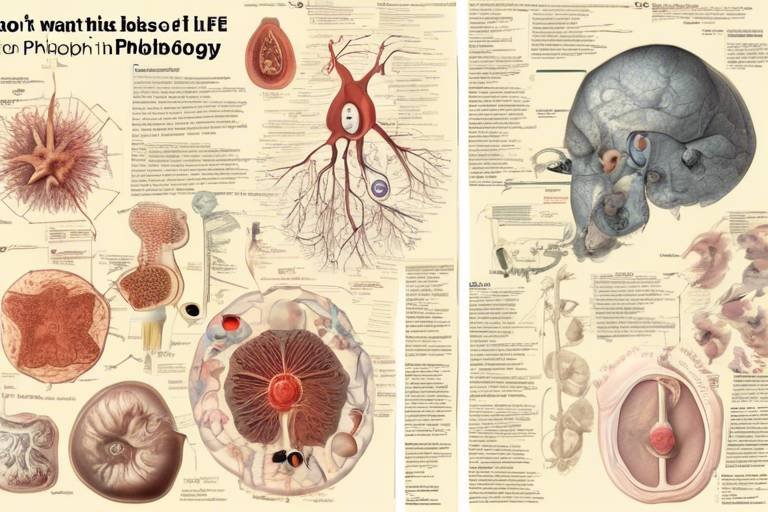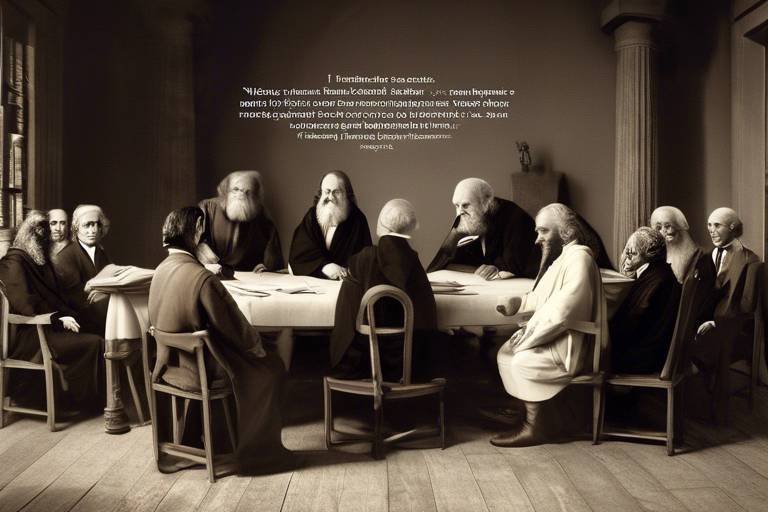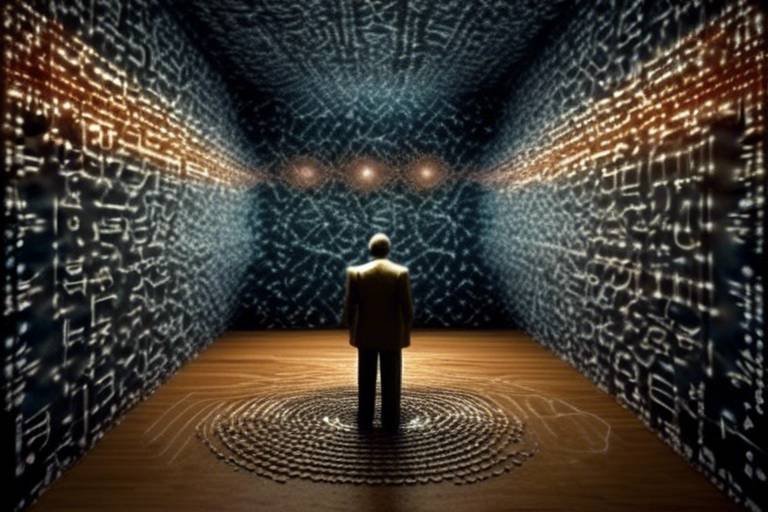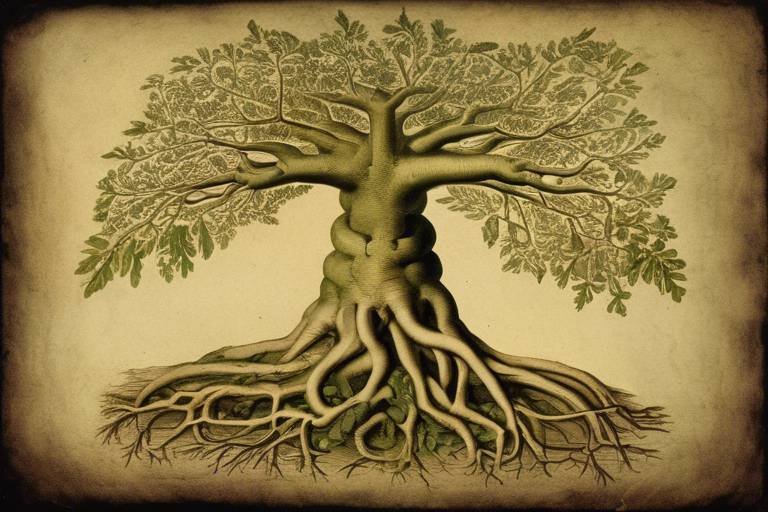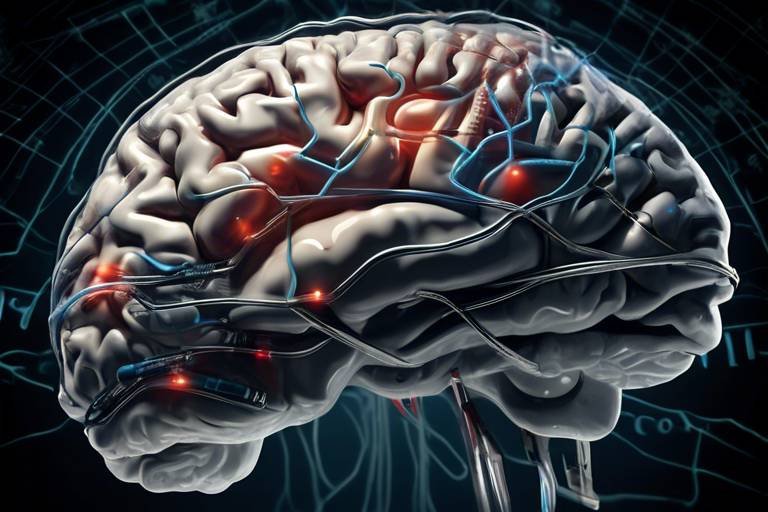Understanding Time - From Augustine to Einstein
Time is one of those fascinating concepts that has puzzled humans for centuries. It’s like a river, flowing ceaselessly, yet we often find ourselves trying to catch a glimpse of its source or predict its course. From the musings of early philosophers like Augustine to the groundbreaking theories of Einstein, our understanding of time has evolved dramatically. In this article, we will explore how different thinkers and cultures have perceived time, revealing its complexities and the profound impact it has on our lives.
When we dive into the philosophical inquiries surrounding time, we uncover a rich tapestry of thoughts and ideas. Ancient thinkers, like the Greeks, viewed time as a cyclical phenomenon, tied to the rhythms of nature and the cosmos. In contrast, Augustine introduced a more subjective lens, arguing that time is not merely a sequence of events but a construct shaped by human perception. This philosophical groundwork laid the foundation for future discussions, leading us to ponder: Is time an objective reality, or is it merely a figment of our consciousness?
Augustine’s reflections on time are particularly intriguing. He famously stated, “What then is time? If no one asks me, I know what it is. If I wish to explain it to him who asks, I do not know.” This paradox highlights the subjective nature of time. For Augustine, our understanding of past, present, and future is deeply intertwined with human experience. The past is a memory, the present a fleeting moment, and the future an anticipation. This perspective invites us to consider how our individual experiences shape our relationship with time, making it a personal journey rather than a universal constant.
Fast forward to the 17th century, and we encounter Sir Isaac Newton, who revolutionized our understanding of time with his concept of absolute time. Newton viewed time as a linear, measurable entity, independent of human perception. This idea provided a framework that allowed scientists to quantify time, leading to advancements in physics and engineering. Imagine time as a ruler, stretching infinitely in one direction, allowing us to measure distances and predict movements. This Newtonian view dominated scientific thought until the advent of the 20th century, challenging us to rethink the very fabric of our reality.
Then came Einstein, who turned the world of physics on its head with his theory of relativity. He proposed that time is not a constant; rather, it is relative to the observer's speed and gravitational field. Picture this: two identical clocks, one on Earth and the other traveling at the speed of light. The clock in motion ticks slower than the one at rest. This revelation shattered the Newtonian paradigm and introduced a new understanding of time as a flexible dimension woven into the fabric of space. Suddenly, time became a player in the cosmic dance, influenced by velocity and gravity.
As if the discussions on time couldn’t get any more mind-bending, we delve into quantum mechanics. Here, time takes on a new dimension, where classical notions break down. Concepts like time's arrow—where time seems to flow in one direction—and the role of the observer in measurement challenge our traditional understanding. In this realm, time is not just a backdrop but a participant in the unfolding drama of existence. It raises questions: Is time a fundamental aspect of reality, or is it merely an emergent property of more fundamental processes?
It’s fascinating to observe how different cultures perceive time uniquely, shaping social structures, rituals, and daily life. In Western societies, time is often viewed as a commodity—something to be saved, spent, or wasted. In contrast, many Indigenous cultures see time as cyclical, emphasizing the importance of living in harmony with nature’s rhythms. This cultural lens invites us to reflect on how our understanding of time influences our behaviors and interactions. Are we rushing through life, or are we taking the time to savor each moment?
Literature and art have long grappled with the concept of time, using narrative techniques and visual representations to depict its passage and significance in human experience. Think about how a novel can capture a moment in time, stretching it across pages or compressing years into a few sentences. Artists, too, explore time through their works, capturing fleeting moments or the essence of change. This interplay between time and creativity invites us to engage with our own experiences, prompting us to ask: How does time shape our stories and our identities?
As we look to the future, the interplay between philosophy and science continues to evolve, prompting new questions about the nature of time and its implications for humanity. Will we ever fully understand time, or will it remain an enigma? As we advance in technology and scientific understanding, we may uncover deeper layers of this complex concept. The journey of understanding time is an ongoing adventure, one that challenges our perceptions and invites us to explore the mysteries of existence.
- What is the nature of time? Time is a complex concept that can be viewed as both a measurable entity and a subjective experience shaped by human perception.
- How did Augustine influence our understanding of time? Augustine emphasized the subjective nature of time, suggesting that our perception of past, present, and future is deeply personal.
- What is the difference between Newtonian and Einsteinian time? Newtonian time is absolute and linear, while Einsteinian time is relative and influenced by speed and gravity.
- How do different cultures perceive time? Cultural interpretations of time vary widely, influencing social structures, rituals, and daily life.

The Philosophical Foundations of Time
Time, an elusive and profound concept, has captivated the minds of philosophers for centuries. From the ancient Greeks to modern thinkers, the inquiry into what time truly is has sparked a myriad of interpretations and debates. Imagine time as a river, flowing endlessly; its currents shaped by the thoughts and perceptions of those who seek to understand it. In this exploration, we will dive into the philosophical foundations that have laid the groundwork for our contemporary understanding of time.
One of the earliest and most influential discussions about time comes from the Greek philosopher Heraclitus, who famously stated, "You cannot step into the same river twice." This statement encapsulates the idea that time is in constant flux, suggesting that everything is always changing. In contrast, Parmenides argued that change is an illusion, positing that time is an unchanging reality. These contrasting views set the stage for a rich tapestry of thought regarding the nature of time.
Fast forward to the Middle Ages, and we find Saint Augustine grappling with the concept of time in his seminal work, "Confessions." Augustine famously noted, "What then is time? If no one asks me, I know what it is. If I wish to explain it to him who asks, I do not know." This paradox highlights the subjective nature of time, suggesting that our understanding of past, present, and future is intricately tied to human perception. Augustine proposed that time is a mental construct, where the past exists only in memory, the future in expectation, and the present as a fleeting moment. This view emphasizes the importance of consciousness and experience in shaping our understanding of time.
As we journey through history, we encounter the Enlightenment thinkers, such as Immanuel Kant, who argued that time is not an external entity but rather a framework through which we perceive the world. Kant suggested that our minds impose temporal order on experiences, allowing us to make sense of the chaos around us. This revolutionary idea blurred the lines between objective and subjective realities, paving the way for modern philosophical discourse on time.
To summarize the philosophical foundations of time, we can categorize the key perspectives as follows:
| Philosopher | View on Time |
|---|---|
| Heraclitus | Time is in constant flux; change is the only constant. |
| Parmenides | Change is an illusion; time is unchanging. |
| Saint Augustine | Time is subjective; it exists in memory and expectation. |
| Immanuel Kant | Time is a mental framework imposed on experiences. |
These philosophical inquiries have laid a rich groundwork for understanding time, influencing countless disciplines, from physics to psychology. As we continue to explore the nature of time, we must consider how these historical perspectives inform our current interpretations. Are we merely products of our perceptions, or is there an objective reality to time that transcends human consciousness? The answers to these questions remain elusive, inviting further exploration and discussion.
- What is the nature of time according to philosophers? Philosophers have debated whether time is a subjective experience, an objective reality, or a mental construct imposed by our consciousness.
- How did Augustine contribute to the understanding of time? Augustine emphasized the subjective nature of time, suggesting that our perception shapes our understanding of the past, present, and future.
- What role did Kant play in the philosophy of time? Kant proposed that time is not an external reality but a framework that our minds use to organize experiences.

Augustine's View on Time
When we think about time, it’s easy to get wrapped up in clocks, calendars, and schedules. But what if I told you that one of the most profound explorations of time comes from a man who lived over 1,600 years ago? Saint Augustine, a philosopher and theologian, had some intriguing ideas about time that still resonate today. He posed a question that might catch you off guard: “What is time?” It’s not just a simple query; it’s a deep dive into how we perceive our existence.
Augustine’s reflections on time are fascinating because they challenge our everyday understanding. He argued that time is not a tangible entity but rather a subjective experience. For Augustine, the past is a memory, the present is a fleeting moment, and the future is merely an expectation. This perspective leads us to consider how our personal experiences shape our understanding of time. Think about it: when you reminisce about a cherished moment, it feels as if time expands, doesn’t it? Conversely, when you’re waiting for something exciting, time seems to drag on. This paradox illustrates Augustine's point that time is intimately tied to human perception.
To further emphasize his viewpoint, Augustine categorized time into three distinct dimensions:
- Memory: This relates to our recollection of the past. It’s how we hold onto experiences and moments that have shaped us.
- Attention: This is the present moment, where our focus lies. It’s fleeting and often feels like it slips through our fingers.
- Expectation: This refers to our anticipation of the future, filled with hopes and uncertainties.
In essence, Augustine believed that while we measure time in hours and minutes, our emotional and psychological experiences are what truly define it. He famously stated, “If no one asks me what time is, I know; but if I wish to explain it to him who asks, I do not know.” This quote encapsulates the struggle of trying to articulate something so inherently personal and subjective.
Moreover, Augustine’s thoughts on time also touch upon the nature of God and eternity. He suggested that God exists outside of time, viewing all moments—past, present, and future—simultaneously. This idea raises profound questions about the divine and how it interacts with our temporal existence. If God is eternal, what does that mean for our understanding of time? Are we simply participants in a greater cosmic rhythm that transcends our limited perception?
As we reflect on Augustine’s view of time, it becomes clear that his insights invite us to consider not just how we mark the passage of time, but how it shapes our identities and experiences. Time, in his view, is a fluid concept, deeply intertwined with our consciousness. It challenges us to think beyond the mechanical ticking of a clock and embrace the rich tapestry of moments that define our lives.
- What is Augustine's main argument about time? Augustine argues that time is a subjective experience, shaped by human perception rather than a fixed entity.
- How does Augustine categorize time? He categorizes time into three dimensions: memory (the past), attention (the present), and expectation (the future).
- What does Augustine say about God's relationship with time? Augustine suggests that God exists outside of time, perceiving all moments simultaneously.
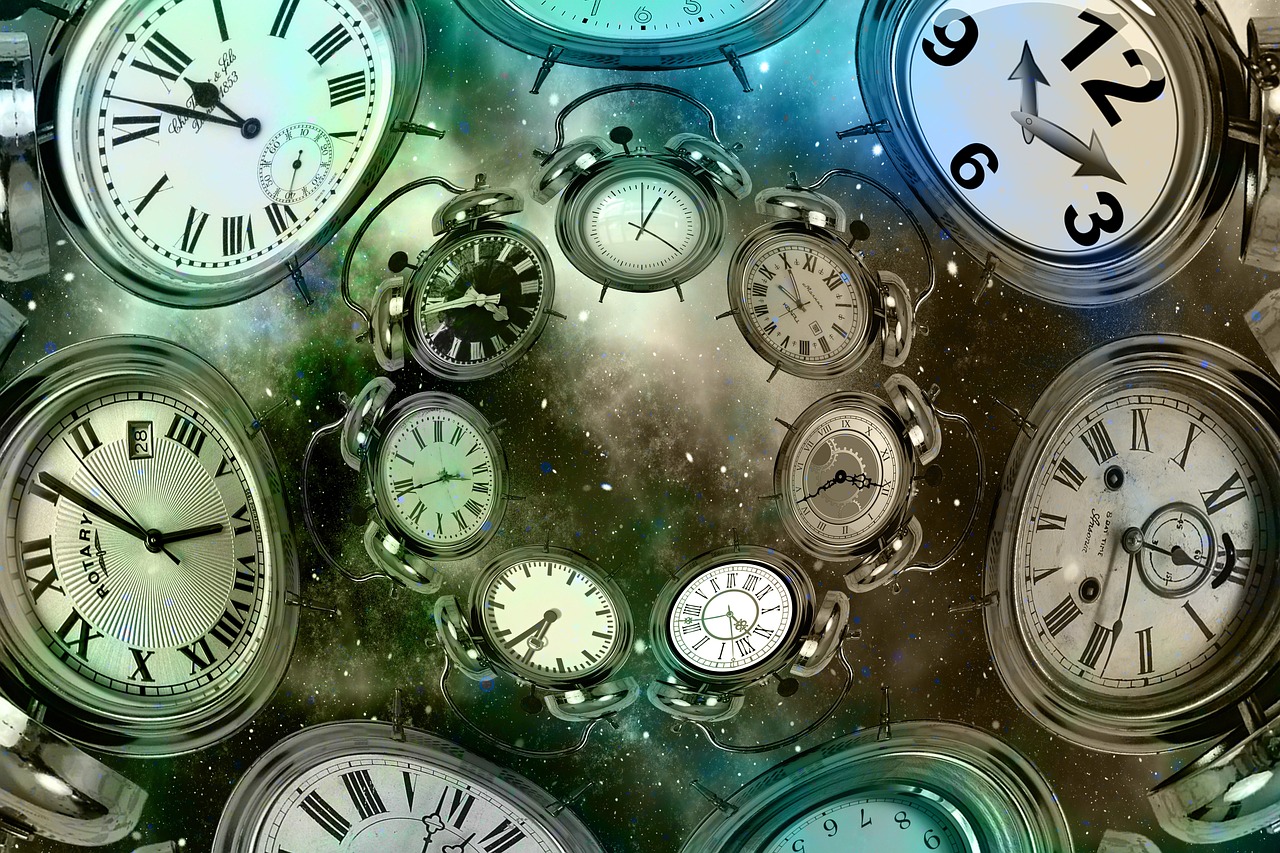
Newtonian Time: Absolute and Measurable
When we think about time, many of us instinctively picture a straight line, a neat and tidy sequence of moments stretching from the past, through the present, and into the future. This linear perception of time can largely be credited to the revolutionary ideas of Sir Isaac Newton. In the late 17th century, Newton introduced a concept of time that was both absolute and measurable, fundamentally altering how humanity approached the very fabric of reality itself.
Newton's view of time posited that it flows uniformly, like a river that never changes its course, regardless of the events that unfold along its banks. This idea was revolutionary because it suggested that time exists independently of the physical world. In other words, time does not bend or warp based on our experiences or perceptions; it is a constant backdrop against which all actions occur. For Newton, time was an unyielding ruler, measuring the intervals between events with precision.
This perspective on time had profound implications for science and mathematics. It allowed for the development of equations that could predict the motion of celestial bodies, facilitating advancements in astronomy and physics. Newton's laws of motion, intertwined with his conception of time, provided a framework that enabled scientists to calculate trajectories, velocities, and forces with remarkable accuracy.
To further illustrate Newton's view, consider the following table that contrasts Newtonian time with earlier philosophical interpretations:
| Aspect | Newtonian Time | Philosophical Interpretations |
|---|---|---|
| Nature | Absolute and uniform | Subjective and variable |
| Measurement | Quantifiable and linear | Qualitative and experiential |
| Relation to Events | Independent of events | Dependent on human perception |
While Newton's framework provided a solid foundation for understanding time, it also raised questions that would linger for centuries. How does this absolute time relate to our personal experiences? Can we truly separate our perception of time from its objective measurement? These inquiries set the stage for future thinkers, including Albert Einstein, who would challenge Newtonian ideals and introduce a more complex understanding of time as a relative construct influenced by speed and gravity.
In essence, Newton's conception of time was a double-edged sword. On one hand, it enabled the advancement of science and technology, allowing for the precise calculation of time and motion. On the other hand, it created a dichotomy between the measurable and the experiential, leaving humanity to grapple with the philosophical implications of time's true nature. As we move forward in our exploration of time, it's essential to recognize how Newton's ideas laid the groundwork for both scientific progress and philosophical inquiry.
- What is Newtonian time?
Newtonian time refers to the concept of time as absolute and measurable, independent of events and experiences. - How did Newton's ideas influence modern science?
Newton's ideas provided a framework for understanding motion and time, leading to significant advancements in physics and astronomy. - What are the limitations of Newtonian time?
Newtonian time does not account for the subjective experience of time and is challenged by modern theories such as relativity.

Einstein and the Relativity of Time
When we think about time, it often feels like a straight line, a constant tick-tock of the clock that governs our lives. However, Albert Einstein turned this notion on its head with his groundbreaking theory of relativity. Imagine you're at a party, and one friend is dancing while another is sitting quietly. To the dancer, time seems to fly as they lose themselves in the rhythm, while the sitter feels every second drag on. This subjective experience of time is exactly what Einstein explored on a cosmic scale.
Einstein proposed that time isn’t a fixed backdrop against which events occur; instead, it is intricately linked to space and motion. His famous equation, Emc², suggests that energy and mass are interchangeable, but it also implies that time is affected by speed and gravity. In essence, the faster you move through space, the slower you move through time. This phenomenon is known as time dilation, and it has profound implications for our understanding of the universe.
To visualize this, consider the following table that summarizes the effects of speed on time perception:
| Speed (as a fraction of the speed of light) | Time Dilation Factor |
|---|---|
| 0.1c (10% of the speed of light) | 1.005 |
| 0.5c (50% of the speed of light) | 1.155 |
| 0.9c (90% of the speed of light) | 2.294 |
| 0.99c (99% of the speed of light) | 7.089 |
This table illustrates how, as one approaches the speed of light, time slows down significantly relative to an observer at rest. For instance, if you were traveling at 99% of the speed of light, time would pass over seven times slower for you than for someone remaining on Earth. Isn't that mind-boggling?
Einstein's insights didn't just stop at time dilation; they also introduced the concept of spacetime. He proposed that time and space are not separate entities but rather intertwined in a four-dimensional fabric. Picture a trampoline: when a heavy object like a bowling ball is placed in the center, it creates a dip in the fabric. Similarly, massive objects like planets and stars warp spacetime around them, affecting the passage of time. This means that time runs slower in stronger gravitational fields—a phenomenon confirmed by experiments using precise atomic clocks at different altitudes.
So, what does this mean for us in everyday life? Well, it’s not just a theoretical exercise; GPS satellites, which orbit Earth at high speeds and experience weaker gravity than we do on the surface, must account for time dilation to provide accurate location data. Without Einstein's theories, our navigation systems would be off by several kilometers each day!
In essence, Einstein's theory of relativity challenges our intuitive understanding of time. It encourages us to think of time not as a rigid ruler but as a fluid, dynamic aspect of our universe that is influenced by speed and gravity. As we continue to explore the cosmos, who knows what other surprises time has in store for us?
- What is time dilation? Time dilation is the phenomenon where time passes at different rates depending on the relative speed of objects or the strength of gravitational fields.
- How does gravity affect time? The stronger the gravitational field, the slower time passes compared to areas with weaker gravity.
- What is spacetime? Spacetime is the four-dimensional continuum that merges the three dimensions of space with the dimension of time, as proposed by Einstein.

Time in Quantum Mechanics
When we dive into the realm of quantum mechanics, time becomes a slippery concept, unlike the rigid, linear path we often associate with it. Imagine standing at a crossroads where the traditional understanding of time meets the bizarre world of quantum phenomena. Here, time doesn't just tick away; it dances, twists, and turns in ways that challenge our very perception of reality. In classical mechanics, time is a constant—an ever-flowing river that carries us along. But in quantum mechanics, it’s more like a swirling eddy, unpredictable and elusive.
One of the most fascinating aspects of time in quantum mechanics is the idea of time's arrow. In classical physics, time flows in one direction—from the past, through the present, and into the future. However, in the quantum realm, this linearity can be disrupted. Events can seem to occur out of order, leading to a perplexing question: does time really flow in a single direction, or can it be influenced by the observer? This question is at the heart of many debates among physicists and philosophers alike.
Moreover, the role of the observer in quantum mechanics cannot be overstated. The famous double-slit experiment illustrates this beautifully. When particles such as electrons are fired at a barrier with two slits, they create an interference pattern, suggesting they are behaving like waves. However, when we attempt to observe which slit the particle goes through, it behaves like a particle instead, collapsing the wave function into a definite state. This raises the intriguing possibility that the act of measurement itself affects the passage of time and the outcome of events. It's as if time is holding its breath, waiting for us to take a peek.
To further illustrate the complexities of time in quantum mechanics, consider the following table that summarizes key differences between classical and quantum perspectives:
| Aspect | Classical Mechanics | Quantum Mechanics |
|---|---|---|
| Nature of Time | Linear and absolute | Relative and non-linear |
| Observer Effect | Minimal impact | Significant impact |
| Time's Arrow | Unidirectional | Potentially bidirectional |
| Measurement | Objective | Subjective |
In addition to these theoretical implications, the concept of quantum entanglement adds another layer of complexity to our understanding of time. When particles become entangled, the state of one particle is instantly connected to the state of another, regardless of the distance separating them. This phenomenon challenges our conventional notions of time and space, suggesting that information can be transmitted instantaneously, defying the limits imposed by the speed of light. It’s as if time itself is a mere illusion, bending and twisting around the relationships between particles.
As we continue to explore the quantum realm, the implications for our understanding of time are profound. Are we merely observers in a universe where time is a construct of our consciousness? Or does time exist independently, influenced by the peculiarities of quantum mechanics? The answers remain elusive, but one thing is for sure: the journey through the quantum world will continue to reshape our understanding of time in ways we are only beginning to comprehend.
- What is the role of time in quantum mechanics? Time in quantum mechanics is often seen as relative and can be influenced by the act of observation.
- How does quantum entanglement affect our understanding of time? Quantum entanglement suggests that particles can be interconnected in ways that challenge traditional notions of time and space.
- Is time in quantum mechanics linear? No, time in quantum mechanics can be non-linear and is often influenced by the observer's actions.
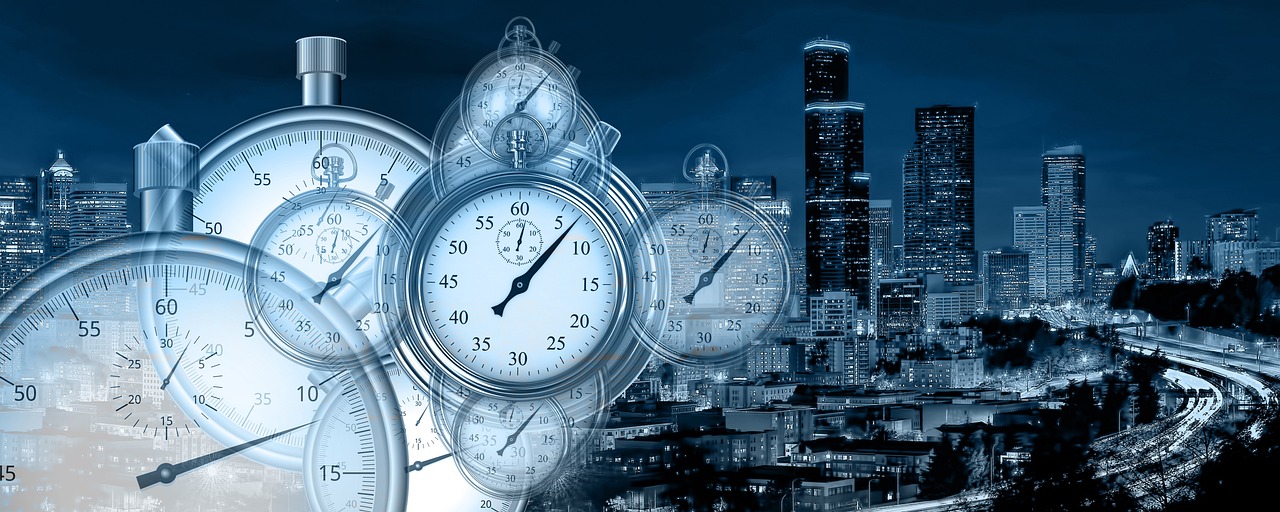
Cultural Interpretations of Time
When we think about time, it's fascinating to realize that our understanding of it is deeply influenced by cultural contexts. Different societies have unique ways of perceiving and measuring time, which can shape everything from social structures to daily rituals. For example, in many Western cultures, time is often seen as a linear progression—an arrow shooting straight from the past to the future. We schedule our lives by the clock, emphasizing punctuality and efficiency. But what if I told you that not all cultures share this perspective?
In contrast, many Indigenous cultures view time as cyclical. They see it as a repeating cycle of seasons, events, and life stages, where the past, present, and future are interconnected. This perspective can lead to a more relaxed approach to time, where events are not rushed but celebrated as they come around again. Imagine a wheel turning, where each spoke represents a different moment in time, continuously returning to the same point. This cyclical understanding can foster a deeper appreciation for the natural world and our place within it.
Moreover, in some Eastern cultures, time is perceived as fluid and flexible. For instance, in cultures influenced by Buddhism, the concept of time is often linked to the idea of impermanence. Here, the focus is less on the clock and more on the present moment—an idea encapsulated in the phrase "be here now." This perspective encourages mindfulness and a deeper connection to one's surroundings, allowing individuals to experience life more fully rather than merely racing against the ticking clock.
To illustrate these differences further, let's look at a comparison table of how various cultures interpret time:
| Cultural Context | View of Time | Implications on Daily Life |
|---|---|---|
| Western Cultures | Linear | Emphasis on punctuality, schedules, and deadlines |
| Indigenous Cultures | Cyclical | Focus on seasons and natural rhythms, less urgency |
| Eastern Cultures | Fluid | Mindfulness, present moment awareness, flexibility |
These varying interpretations of time can significantly affect social interactions and even economic practices. For instance, in cultures with a linear view of time, business meetings often adhere strictly to schedules. In contrast, cultures with a more cyclical or fluid understanding may allow for a more organic flow to discussions, where relationships take precedence over rigid timelines.
Additionally, rituals and traditions across cultures reflect these interpretations. In some societies, annual festivals celebrate the cyclical nature of time, marking the changing seasons and honoring ancestors. In others, milestones are celebrated with great fanfare, emphasizing the linear progression of life. This interplay of time and culture not only enriches our understanding of the world but also highlights the diverse ways humans relate to the concept of time.
In conclusion, the cultural interpretations of time are as varied as the cultures themselves. Whether viewed as a linear path, a cyclical journey, or a fluid experience, time shapes our lives in profound ways. Understanding these differences can foster empathy and appreciation for the diverse ways people engage with their world, reminding us that while time may be a constant, our perception of it is anything but.
- How do different cultures measure time? Different cultures may use natural events, lunar cycles, or specific calendars to measure time, reflecting their unique environments and traditions.
- Why is understanding cultural interpretations of time important? It helps us appreciate diversity in human experiences and can improve interpersonal relationships in our increasingly globalized world.
- Can one's perception of time change over time? Yes, personal experiences, travel, and exposure to different cultures can significantly alter how individuals perceive and value time.
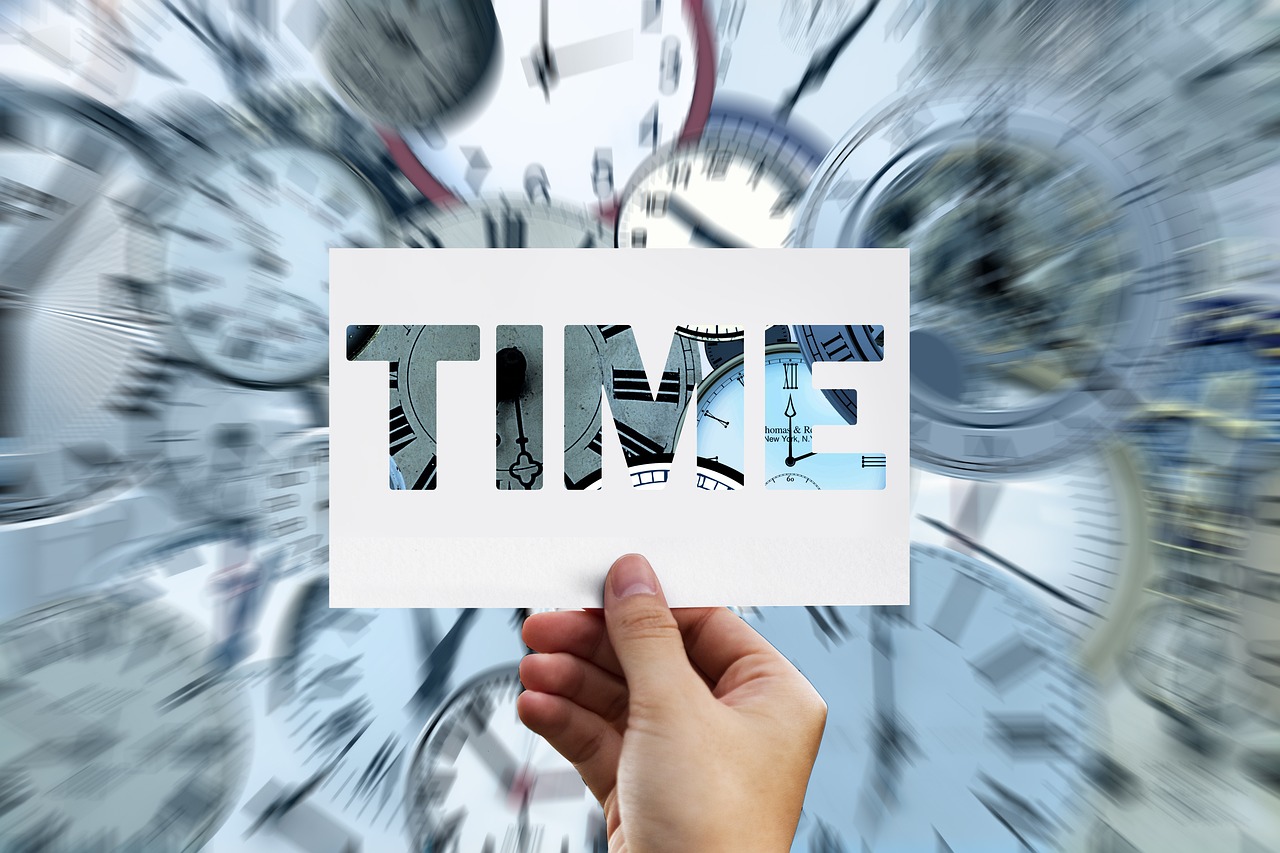
Time in Literature and Art
Time has always been a fascinating theme in literature and art, acting as both a backdrop and a central character in countless narratives. From the rhythmic ticking of a clock in a short story to the gradual fading of light in a painting, artists and writers have employed the concept of time to explore the human experience. Have you ever noticed how a novel can manipulate time, stretching a moment into an eternity or compressing years into a single sentence? This ability to play with time allows authors to evoke emotions, create suspense, and convey profound truths about existence.
Take, for instance, the works of Virginia Woolf, who masterfully intertwines time and consciousness. In her novel Mrs. Dalloway, Woolf delves into the stream of consciousness of her characters, revealing how their perceptions of time shift based on memory and experience. The narrative flows seamlessly between past and present, illustrating the fluidity of time in our minds. This exploration invites readers to reflect on how their own experiences shape their understanding of time. Isn’t it intriguing how a single moment can resonate throughout our lives?
In the realm of visual art, Salvador Dalí famously depicted time as a malleable concept in his painting The Persistence of Memory. The melting clocks symbolize the relativity of time, challenging the viewer's perception of reality. This artwork not only captivates the eye but also provokes thought about how time influences our lives. Just like a dream, time in Dalí's world is fluid and subjective, prompting us to question our own relationship with it.
Moreover, poetry often encapsulates the essence of time in a few carefully chosen words. Poets like John Keats and Robert Frost have used natural imagery to evoke the passage of time, capturing fleeting moments with exquisite detail. For example, Keats' line “A thing of beauty is a joy forever” suggests that while time may erode physical beauty, the emotional resonance of those moments can last indefinitely. This interplay between the ephemeral and the eternal makes poetry a powerful medium for exploring time.
In contemporary literature, authors like David Mitchell in Cloud Atlas weave multiple narratives across different time periods, illustrating how actions reverberate through history. This interconnectedness emphasizes that time is not just linear but rather a complex web of experiences that shape our present and future. Each story, though distinct, contributes to a greater understanding of humanity’s journey through time.
Art and literature are not just reflections of time; they also serve as a means to challenge and redefine it. Whether it’s through a novel that collapses time into a single moment or a painting that distorts reality, these creative expressions invite us to question our perceptions and experiences. They remind us that time is not merely a ticking clock but a rich tapestry woven from the threads of our lives.
- How does literature explore the concept of time? Literature often manipulates time through narrative techniques, allowing authors to stretch or compress moments, thus deepening emotional impact.
- What role does time play in visual art? In visual art, time can be depicted through imagery and symbolism, challenging viewers to consider their own perceptions of reality and the passage of time.
- Can time be represented differently in various cultures? Absolutely! Different cultures have unique interpretations of time, influencing their artistic and literary expressions.
- Why is time a significant theme in poetry? Time in poetry allows for the exploration of fleeting moments and eternal truths, often encapsulated in a few powerful words.

The Future of Time: Philosophical and Scientific Perspectives
As we stand on the precipice of the future, the concept of time continues to challenge our understanding in profound ways. Philosophers and scientists alike are grappling with questions that push the boundaries of traditional thought. What does the future hold for our understanding of time? Can we ever truly grasp its essence, or is it a concept that will forever elude us? These inquiries are not merely academic; they resonate deeply with our lived experiences and perceptions.
Philosophically, the future of time invites us to consider whether time is an inherent feature of the universe or a construct of human consciousness. Thinkers like Heidegger and Bergson have suggested that time is intimately tied to our existence and perception. They argue that the linear progression of past, present, and future may be a simplification of a much more complex reality. This leads us to ponder: if time is subjective, how does that influence our choices and experiences? Are we merely players in a grand narrative, or do we have the power to shape time itself?
On the scientific front, advancements in physics continue to reshape our understanding of time. With the advent of quantum mechanics, time is no longer seen as a straightforward continuum. Instead, it appears to be more like a fabric, woven intricately with the threads of space and matter. The implications of this shift are staggering. For instance, the concept of time's arrow—the direction in which time flows—raises questions about causality and the nature of reality. Are we bound by a linear timeline, or can time be perceived in a more fluid manner?
Moreover, as we delve deeper into the realms of theoretical physics, the idea of time travel—once the stuff of science fiction—begins to emerge as a tantalizing possibility. Could wormholes or other cosmic phenomena allow us to traverse time? This notion not only excites the imagination but also brings forth a host of philosophical dilemmas. If we could travel back in time, would we alter our past? Would our future selves be aware of these changes? The interplay between science and philosophy becomes increasingly intricate as we explore these questions.
As we navigate these complex discussions, it's essential to recognize that cultural perspectives on time will also evolve. Different societies have unique interpretations of time, influencing everything from rituals to social structures. For example, while Western cultures often view time as a commodity to be managed and optimized, many Indigenous cultures perceive it as cyclical and interconnected with nature. This divergence in understanding can lead to rich dialogues about how we live our lives and prioritize our values in an increasingly fast-paced world.
In conclusion, the future of time is a fascinating frontier where philosophy and science converge. As we continue to explore the depths of time's mysteries, we may find that our understanding of reality itself is contingent upon how we perceive and interpret time. The questions we ask today will shape the discourse of tomorrow, inviting us to engage in a dialogue that bridges the gap between our experiences and the cosmos. Will we unlock the secrets of time, or will it remain an enigma, forever dancing just out of reach?
- What is the philosophical significance of time? Time is often viewed as a fundamental aspect of existence, influencing how we perceive reality and make choices.
- How does quantum mechanics change our understanding of time? Quantum mechanics introduces the idea that time may not be linear and can be influenced by various factors, challenging traditional views.
- Can time travel be possible? While theoretical physics suggests possibilities like wormholes, time travel remains speculative and raises complex philosophical questions.
- How do cultural perspectives influence our understanding of time? Different cultures interpret time in unique ways, affecting social structures, rituals, and daily life.
Frequently Asked Questions
- What is the philosophical significance of time?
Time has been a central theme in philosophy, prompting questions about its nature, existence, and our perception of it. Philosophers like Augustine have argued that time is subjective, shaped by human experiences and consciousness, while others have sought to define it in absolute terms.
- How did Augustine view time?
Augustine viewed time as a complex interplay of the past, present, and future. He believed that the past exists only in memory, the future in expectation, and the present as a fleeting moment. This subjective perspective invites us to consider how our understanding of time is influenced by our individual experiences.
- What is Newtonian time?
Newtonian time refers to Sir Isaac Newton's conception of time as absolute and linear. In this framework, time is consistent and measurable, providing a universal clock that ticks the same for everyone, regardless of their circumstances. This idea dominated scientific thought until the advent of modern physics.
- How did Einstein change our understanding of time?
Einstein revolutionized the concept of time with his theory of relativity, proposing that time is not a fixed entity but rather relative to the observer's speed and gravitational field. This means that time can flow differently for people in different circumstances, fundamentally altering our perception of reality.
- What role does time play in quantum mechanics?
In quantum mechanics, time becomes even more complex. It challenges classical interpretations by introducing concepts like time's arrow, which refers to the directionality of time, and the observer effect, where the act of measurement influences the outcome. This adds layers of mystery to our understanding of time.
- How do different cultures perceive time?
Cultural interpretations of time vary significantly across societies. For instance, some cultures view time as cyclical, emphasizing renewal and repetition, while others see it as linear, focusing on progress and future goals. These perceptions influence social structures, rituals, and everyday life.
- In what ways is time represented in literature and art?
Literature and art have long explored the theme of time, employing various narrative techniques and visual representations. Authors might use flashbacks or non-linear storytelling to convey the passage of time, while artists might depict time through changing landscapes or the aging of subjects, emphasizing its significance in the human experience.
- What does the future hold for our understanding of time?
The future of time remains a fascinating intersection of philosophy and science. As our scientific knowledge advances, new questions emerge about the nature of time, its implications for humanity, and how we might continue to redefine our understanding of this elusive concept.



